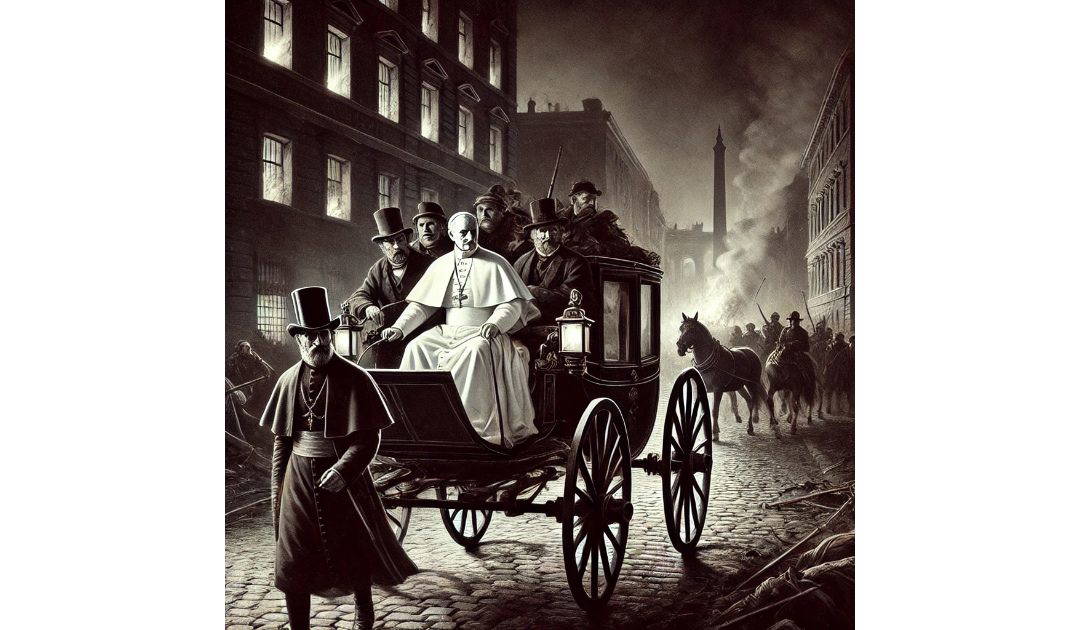On 8th December 1854 Pope Pius IX formally defined the dogma of the Immaculate Conception, stating that the Virgin Mary was conceived without original sin.
Pope Pius IX (1792–1878) was the longest-serving pope in history, reigning from 1846 to 1878. His papacy is one of the most significant in the history of the Catholic Church, marked by dramatic shifts in the Church’s role and influence in a rapidly changing world. He was born Giovanni Maria Mastai-Ferretti on 13th May 1792, in Senigallia, part of the Papal States. After studying theology he was ordained in 1819. He served as a bishop in Spoleto and Imola before being elevated to the College of Cardinals in 1840. He was elected pope on June 16, 1846, succeeding Pope Gregory XVI. He was Initially seen as a liberal reformer. His early actions reflected a willingness to modernise.
Pius IX initially supported limited political reforms, including a constitution for the Papal States and openness to broader civil liberties. However, the Revolutions of 1848 led to his disillusionment with liberal politics. He fled Rome in disguise in 1848 during revolutionary uprisings, taking refuge in Gaeta. After his return in 1850, his policies became markedly conservative.
He wrote The Syllabus of Errors (1864) which is a controversial document listing 80 errors of modern thinking, including secularism, socialism, and the separation of church and state.
Pius IX convened an ecumenical council, which defined the dogma of papal infallibility, asserting that the pope is preserved from error when pronouncing ex cathedra teachings on faith and morals.
During his papacy, the Italian unification movement (Risorgimento) culminated in the annexation of the Papal States by the Kingdom of Italy. In 1870, Rome was taken by Italian troops, and Pius IX declared himself a “prisoner of the Vatican”, refusing to recognise Italian sovereignty over the former Papal States.
I confess that I don’t believe in papal infallibility, they seem to me to be as fallible as anyone, posssibly more so. My inspiration for Fire and Earth, the second book of the Sir Anthony Standen Adventures, came from two historical events. The first was the burning at the stake of Giordano Bruno in 1600 for the heresy of denying several Catholic doctrines including eternal damnation and the virginity of Mary. That was under Pope Clement VIII. The second was Pope Paul V hiring an assassin to murder Paolo Sarpi, a Venetian polymath and statesman.

